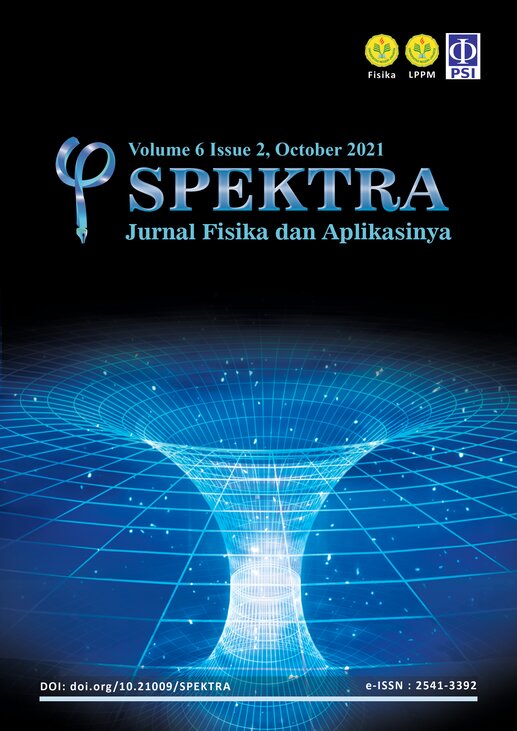STUDY OF THE EFFECT OF MAGNETIC FIELDS ON ELECTROENCEPHALOGRAPHY MEASUREMENT IN FARADAY’S CAGE
DOI:
https://doi.org/10.21009/SPEKTRA.062.02Keywords:
electroencephalography, power spectral density, Faraday’s Cage, signalAbstract
Electroencephalography (EEG) is a method for recording the brain's electrical activity through electrodes placed on the scalp's surface. The amplitude of the EEG signal is in the 40–100 V range, with the five main frequencies in the 0 to 100 Hz range. The EEG is non-stationary and very susceptible to various disturbances, especially frequency disturbances, so eliminating troubles in the raw EEG data is essential to obtain helpful information reflecting brain activity. Interference in the EEG signal comes from muscles, eye movement and blinking, power lines, and interference with other devices. The distractions overlap. Shielding is required to perform an EEG without the risk of interference and ambient background noise. This study tested how the influence of magnetic field disturbances on EEG measurements was carried out in the Faraday cage and an unprotected room. The magnetic field was measured before, during, and after the EEG was operated. EEG measurements were performed on subjects who were conditioned to rest for 5 minutes. The EEG signals generated when EEG recordings were performed in the Faraday and the unprotected rooms were compared. It was found that the difference in the value of the magnetic field originating from electronic devices around the subject does not significantly affect the EEG measurement results.
References
[2] M. Darbas and S. Lohrenger, “Review on mathematical modelling of electroencephalography (EEG),” Jahresber Dtsch Math, vol. 91, no. 2, pp. 67-72, 2018.
[3] S. N. Khotimah et al., “Characterization of the changes in electroencephalogram power spectra due to sound stimulation,” Journal of Physics Conference Series, vol. 1248, no. 1, p. 012022, 2019.
[4] I. Seleznov et al., “Detrended fluctuation, coherence and spectral power analysis of activation rearrangement in eeg dynamics during cognitive workload,” Frontiers in Human Neuroscience, vol. 13, p. 270, 2019.
[5] L. Shao et al., “A flexible dry electroencephalogram electrode based on graphene materials,” Mater Res Express, vol. 6, p. 085619, 2019.
[6] G. Repovs, “Dealing with Noise in EEG Recording and Data Analysis,” Informatica Medica Slovenia, vol. 15, no. 1, 2010.
[7] “How to reduce noise in EEG recordings,” https://mentalab.com/insights/how-to-reduce-noise-in-eeg-recordings/4/2021 (accessed 1 May 2021).
[8] N. Fathima and K. Umarani, “Reduction of Noise in EEG Signal using Faraday's Cage and Wavelets Transform A comparative Study,” International Journal of Engineering Science and Computing, pp. 8566-8569, 2016.
[9] H. K. Mclsaac et al., “Claustrophobia and the magnetic resonance imaging,” J Behav Med, vol. 21, pp. 255-268, 1998.
Downloads
Published
How to Cite
Issue
Section
License
SPEKTRA: Jurnal Fisika dan Aplikasinya allow the author(s) to hold the copyright without restrictions and allow the author(s) to retain publishing rights without restrictions. SPEKTRA: Jurnal Fisika dan Aplikasinya CC-BY or an equivalent license as the optimal license for the publication, distribution, use, and reuse of scholarly work. In developing strategy and setting priorities, SPEKTRA: Jurnal Fisika dan Aplikasinya recognize that free access is better than priced access, libre access is better than free access, and libre under CC-BY or the equivalent is better than libre under more restrictive open licenses. We should achieve what we can when we can. We should not delay achieving free in order to achieve libre, and we should not stop with free when we can achieve libre.
 SPEKTRA: Jurnal Fisika dan Aplikasinya is licensed under a Creative Commons Attribution 4.0 International License.
SPEKTRA: Jurnal Fisika dan Aplikasinya is licensed under a Creative Commons Attribution 4.0 International License.
You are free to:
Share - copy and redistribute the material in any medium or format
Adapt - remix, transform, and build upon the material for any purpose, even commercially.
The licensor cannot revoke these freedoms as long as you follow the license terms.

 E-ISSN 2541-3392
E-ISSN 2541-3392  Focus & Scope
Focus & Scope  Editorial Team
Editorial Team  Reviewer Team
Reviewer Team  Author Guidelines
Author Guidelines  Article Template
Article Template  Author Fee
Author Fee  Publication Ethics
Publication Ethics  Plagiarism Policy
Plagiarism Policy  Open Access Policy
Open Access Policy  Peer Review Process
Peer Review Process  Retraction & Correction
Retraction & Correction  Licensing & Copyright
Licensing & Copyright  Archiving & Repository
Archiving & Repository  Contact
Contact  Mendeley
Mendeley 

